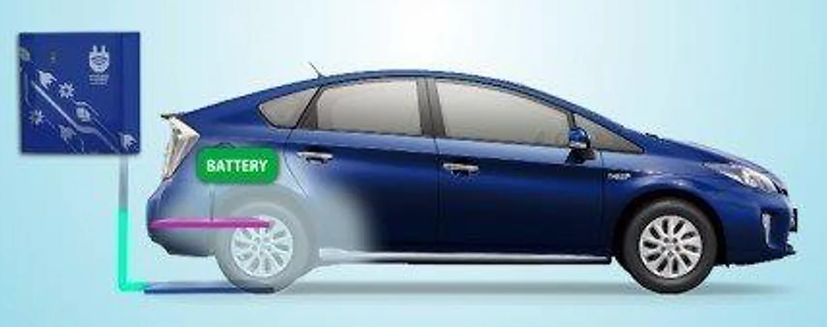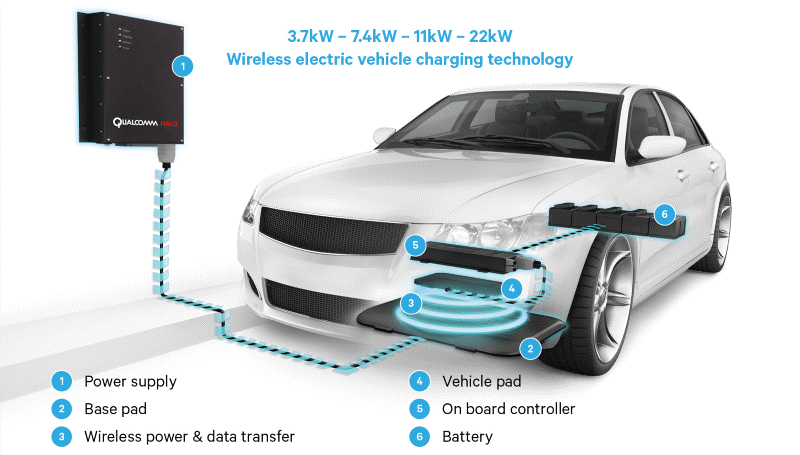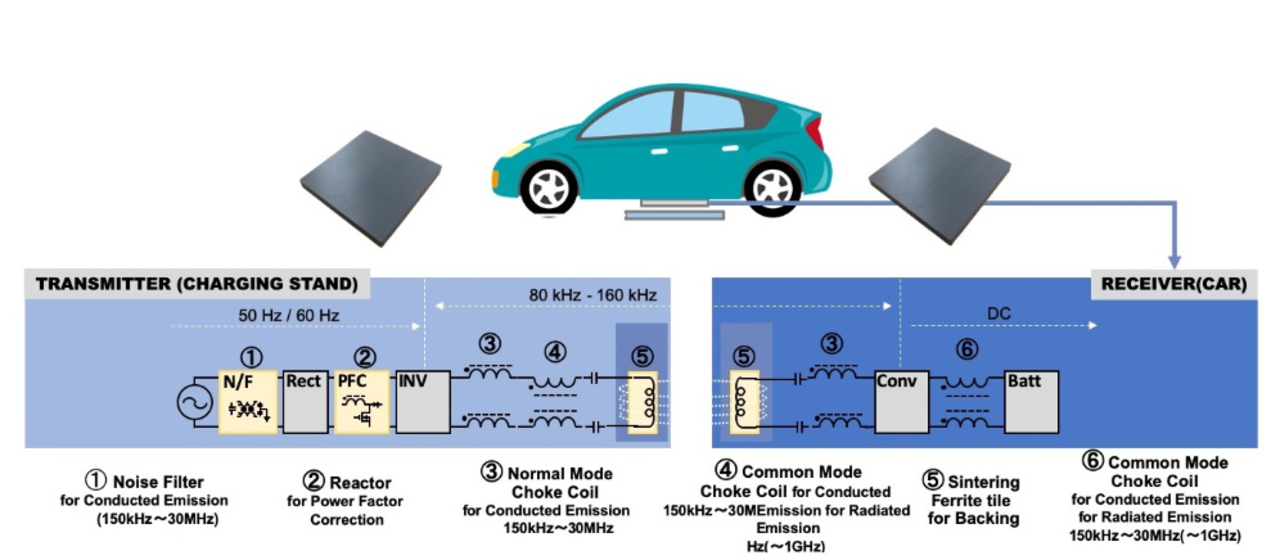Lesson 4 – Wireless charging for xEV
xEV charging
xEV –refers to pure electric vehicle (EV) or plug-in Hybrid (PHV).
A new solution for xEV charging, able to simplify and optimize the charging process, is wireless charging, which can be used both with the vehicle in motion and with the vehicle parked. Wireless charging of an electric vehicle or a plug-in Hybrid is not a dream. Electricity is transmitted by magnetic induction between the transmitting coil on the ground and the receiving coil in the car. This technology is a crucial step forward to cable-free electro-mobility.

4‑20. Figure_ Wireless parking charge
[https://www.toyota-europe.com/news/2016/wireless-charging-for-xev]
The possibility to charge a vehicle without a cable would generate a number of advantages: automatic ‘hands-free’ charging, cable-free clean look of charging stations, and so on.
Electricity is transmitted by magnetic induction between the transmitting coil on the ground and the receiving coil in the car. This technology is a crucial step forward to cable-free electro mobility.
Halo technology — which Qualcomm has been developing since before 2012 — is an entire system for charging an EV, enabling drivers to recharge simply parking over wireless charging ground pads [[i]].
The technology involved includes: power conversion, tuning, wireless power transfer, magnetics, control, communications and safety systems.
WiTricity (Watertown, Mass.) said the acquisition would simplify the ratification of a standard to help ensure wireless charging interoperability across automakers. EV drivers will be able to use any standards-compatible pad to charge their vehicles [[ii]].
A partnership between Qualcomm, automaker Renault and a French R&D institute have been developing an “electric road” technology based on Halo that is capable of recharging an EV while the vehicle is in motion.

4‑21. Figure_ Wireless EV charging technology
https://www.eetasia.com/qualcomm-sells-wireless-ev-charging-technology-to-witricity/
The latest technological advances made by two companies operating in the wireless charging sector, demonstrating how this technology is ever closer to achieving large–scale adoption.
ELECTREON’S TECHNOLOGY
Electreon, a provider of wireless charging solutions for EVs, has successfully tested its dynamic wireless charging technology at the “Arena of the Future” test track powering a Fiat 500 EV and an Iveco electric bus.
Fiat 500 EV was able to travel at a typical highway speed without drawing energy from its battery pack, thus extending its range. Similarly, driving at a lower speed, the vehicle might be able to restore some of its charge.
The Dynamic Wireless Power Transfer (DWPT) technology developed by Electreon is based on conductor loops that are deployed under the asphalt and transmit the energy to the receiver plates of the EV using the principle of magnetic induction. The receiver plate can be installed indifferently on an EV, an electric bus, or an electric truck. To limit power losses and facilitate integration with renewable energy sources, the technology uses DC electricity. Compared to AC charging, this solution allows to use thinner cables, reducing costs and simplifying the thermal management.

4‑22. Figure_ The Dynamic Wireless Power Transfer (DWPT) technology developed by Electreon [https://worldrecord.electreon.com/]
[i] Qualcomm Sells Wireless EV Charging Technology to WiTriCity, Article By: Dylan McGrath, 2019-02-14) Qualcomm Sells Wireless EV Charging Technology to WiTriCity – EE Times Asia (eetasia.com)
[ii] Wireless Charging Empowers the Future of e-Mobility, By Maurizio Di Paolo Emilio, 08.09.2022 https://www.eetimes.com/wireless-charging-empowers-the-future-of-e-mobility/